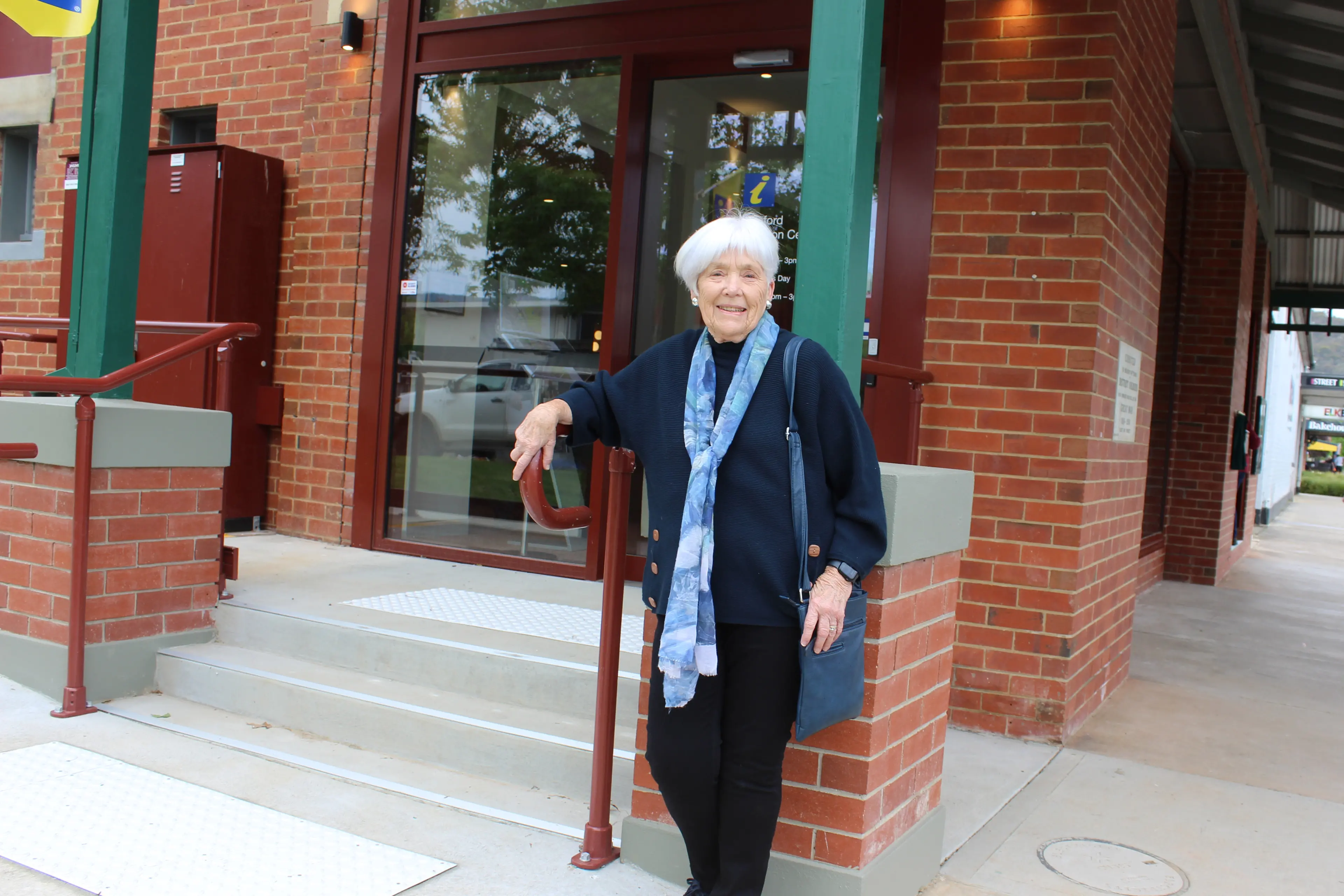PHOTO
54523.0
Myrtleford Memorial Hall was a hive of activity last Friday as more than 100 people attended the grand reopening of the iconic Myrtle Street building after its $1.2 million upgrade.
It was a day of celebration as people of all ages toured the upgraded facilities, much as it would have been a century ago - on 13 October, 1925 - when the hall was first opened thanks to the hard work of the community, who raised 400 pounds from WWI onwards to build it.
Alpine Shire Mayor Cr Sarah Nicholas said the recent "long restoration" project had delivered the community a modern, multipurpose, and flexible community space that is inclusive and accessible to all, with the addition of the Myrtleford Visitor Information Centre expected to bring more people into the building.
And she drew some similarities between the original build and the latest renovation - both driven by community steering groups to meets local needs, including fundraising efforts, which in this most recent case involved selling off some of hall's seating and projectors.
For Barbara Rayner, such "relics" evoked decades of fond memories running the movie theatre in the hall with her late husband Tiff.
She recalled the hall being a focal point for the community, before the Ablett Pavilion and Savoy Club, hosting deb balls, school assemblies and playgroups in between its movie theatre function.
"We bought it (cinema) soon after we married in 1965, but Tiff had previously run the business for other people as he had the projectionist licence," she recalled.
"He had helped Bill Jennings who had the original talkies...running a cinema was what Tiff wanted to do, and he had the first movie camera in Myrtleford and made amateur movies with mates.
"We ran the theatre Wednesday to Sunday in the hall, with matinees on Saturday for the kids and on Sunday night we ran Italian films.
"Cliff had a PA system and used to put speakers on the ute and go around town and advertise matinees and the kids would flock in."
Of course, there was the occasional 'R' rated moment too.
"We had the streaker era," Barbara laughed.
"Streakers would arrive, often on a Sunday night...they'd tear in, young guys, and the crowd would erupt of course, so Tiff would turn the lights on and they would be trapped inside trying to open the side doors to get out...they were funny things really, they never got away with it because they got lit-up as soon as they got in there."
Barbara recalled the only time the move theatre, with its couple of hundred seats fully booked was for the screening of My Brilliant Career (1979), but one of the last screenings - of Titanic in 1997 - was also very popular.
"It's good to see the original ceiling is still here...it has great acoustics and it would be nice if a local theatre group could restart or we could get some of travelling shows here as it's a wonderful hall," she said.
"They've done a wonderful job...it's very impressive, with a great video set-up with screens if you wanted to have conferences, and great stage lighting."
Cr Nicholas told Barbara, and other attentive crowd members, the hall's new features included an access ramp, access steps, hand railing, tactile ground indicators, wheelchair accessibility, and entry and wayfinding signage, as well as automated doors - and people with a disability or additional needs will also benefit from new accessible toilets.
Alpine Shire's Matthew Zagorski, who managed the project, said some improvements - like new pavement out front of the hall, new toilets and upgraded kitchen, led lights and audio visual equipment as part of facelift of the auditorium, a new projector and sound equipment - were visible, while others key works such as new storm water, electrical infrastructure, and store rooms were less obvious.
He paid tribute to Albury-based company Joss Facility Management Pty Ltd and its lead Andrew Carey, who carried out the renovations over eight months, using many local contractors, as well as the architects, and said a "team effort" by Alpine Shire also helped deliver the project.
Council contributed $250,000 to the hall's upgrade, with the remainder funded by Victorian and Commonwealth governments for the project.





